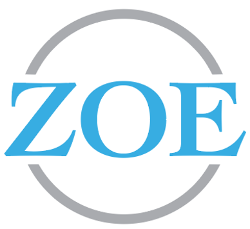Workplace Harassment: Challenges and Solutions
Here at Zoe Training & Consulting we have recently fielded an increasing number of inquiries about harassment prevention training. This in itself could be considered either a negative or positive trend – companies are either coincidentally acting proactively or they are facing an increasing number of harassment cases. Considering a timely June 2016 report by the EEOC Select Task Force on the Study of Harassment in the Workplace, however, it may be safe to assume it’s the latter.
Harassment in the workplace has been recognized as a legitimate form of discrimination by the federal government since 1964, when the U.S. Supreme Court started recognizing claims. Since that time, though, despite all the awareness campaigns, mandates for compliance, and enforcement for prevention, workplace complaints have only increased in number. As the EEOC Task Force reported, “too many people in too many workplaces find themselves in unacceptably harassing situations when they are simply trying to do their jobs.”
In their report the EEOC Task Force highlighted the following key findings:
- Workplace harassment remains a persistent problem. The EEOC received nearly 30,000 complaints of harassment in 2015.
- Harassment is usually not reported. Because of fear of retribution, it is estimated that 3 out of 4 individuals do not report it to their supervisors. These fears are understandable when one looks at research that shows approximately 75% of employees who complain are often met with retaliation, indifference, or hostility.
- There is a compelling business case for stopping and preventing harassment. Cases resolved by the EEOC cost employers more than $160 million in legal fees and other direct costs last year alone. It also causes decreased productivity and increased turnover of employees and may even harm the company’s reputation with consumers, further affecting their bottom line. Most importantly, we need to consider the human element, and that is victims often consequently experience long-term depression, general stress and anxiety, posttraumatic stress disorder (PTSD), and overall impaired psychological well-being.
What is compliance training, is it effective, and how does it help prevent workplace harassment?
Compliance training helps employers comply with the legal requirements of employment non-discrimination laws and increases awareness among employees of the types of conduct that are considered harassment and therefore unacceptable in the workplace. But harassment prevention training on its own may not be enough. Although the EEOC Task Force concluded that compliance training is effective, they recommend a more holistic and long-term approach to stemming the problem.
- Leadership and accountability are critical. The Task Force found that organizational culture is one of the key drivers of harassment. Because workplace culture has such a profound impact on an organization, harassment prevention efforts must start from the top and must include a system of accountability so that those who are found responsible are dealt with appropriately and effectively.
- Workplace training needs to change. A shift must take place that directs the focus away from simply covering the company’s legal responsibilities to offering a more customized solution that looks at addressing and resolving the specifics influencing the harassment trends and the types of employees involved along with opportunities to foster a truly respectful and inclusive workplace.
- New types of training should be explored. It may be helpful for organizations to look at implementing Bystander Intervention Training, which allows coworkers to intervene on the victim’s behalf. Civility Training also shows promise as a viable option. This type of training includes employing positive practices such as respect and compassion in the workplace, bullying prevention, and addressing conflict in the workplace.
